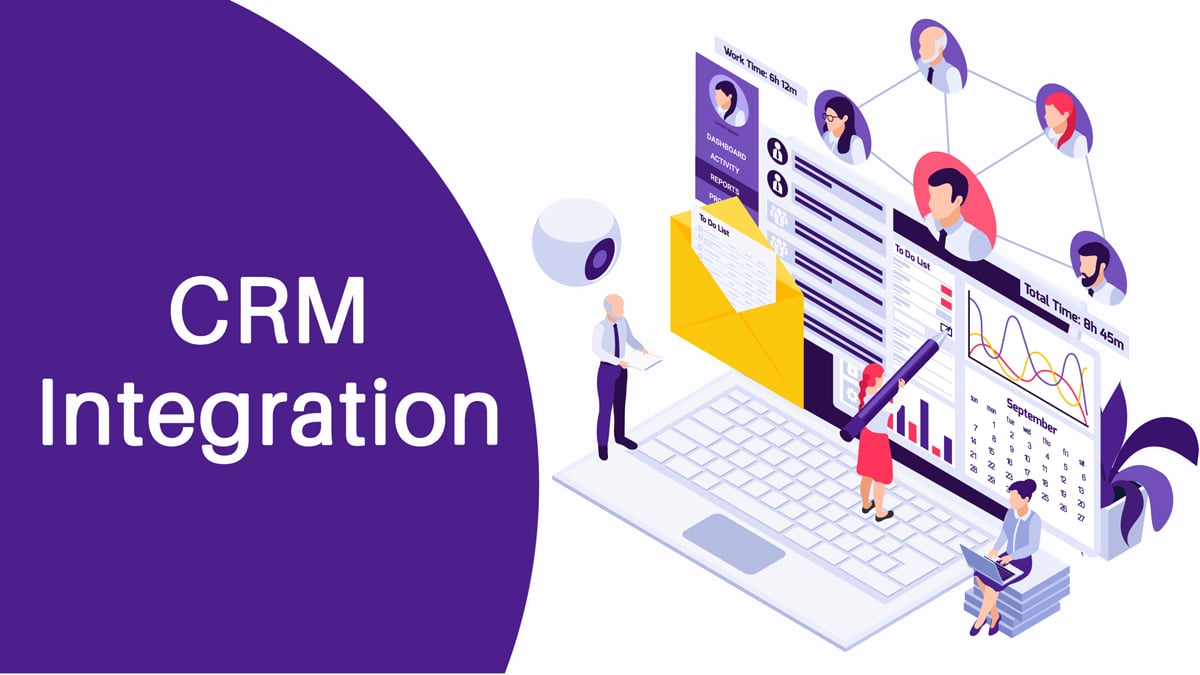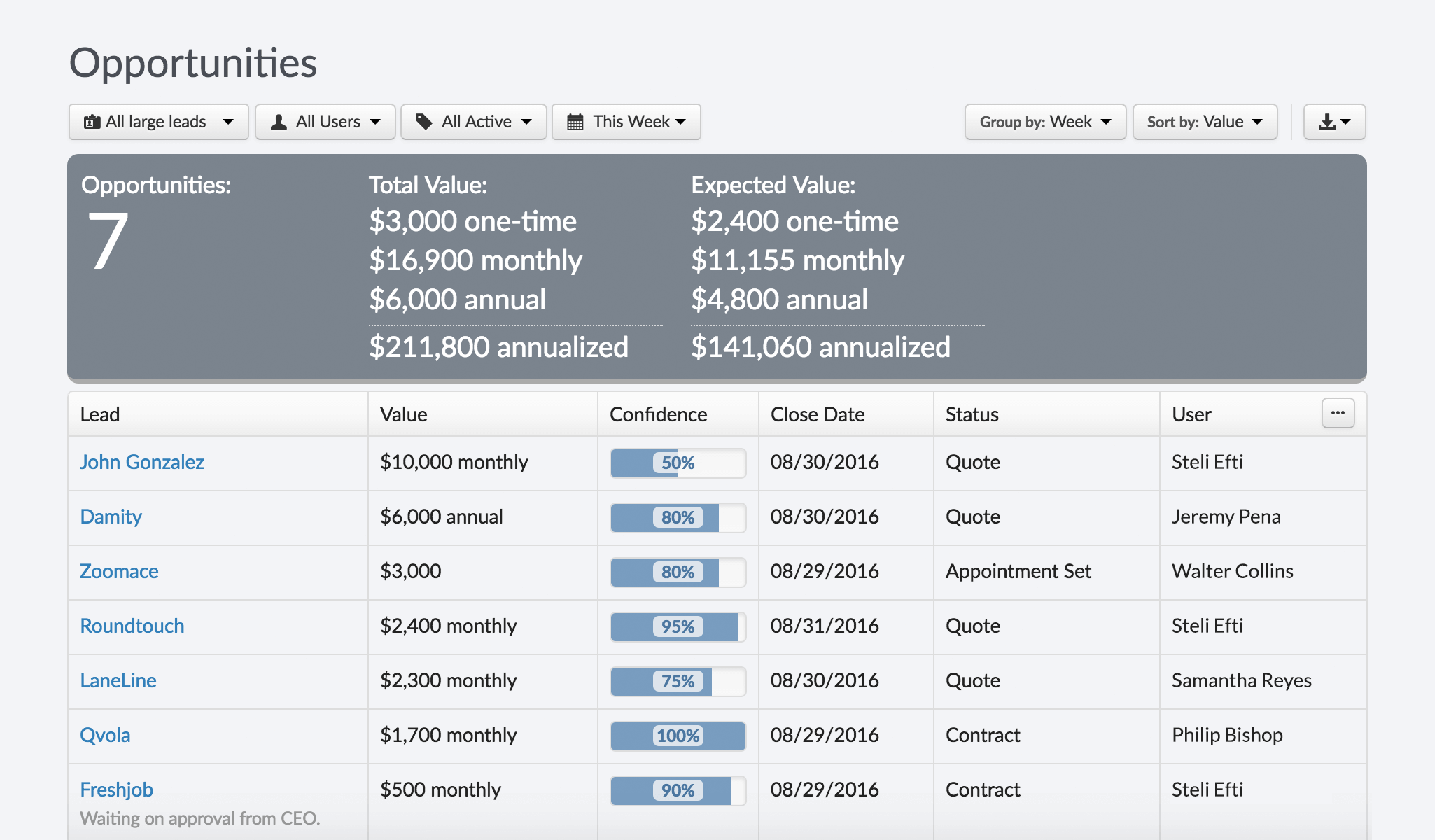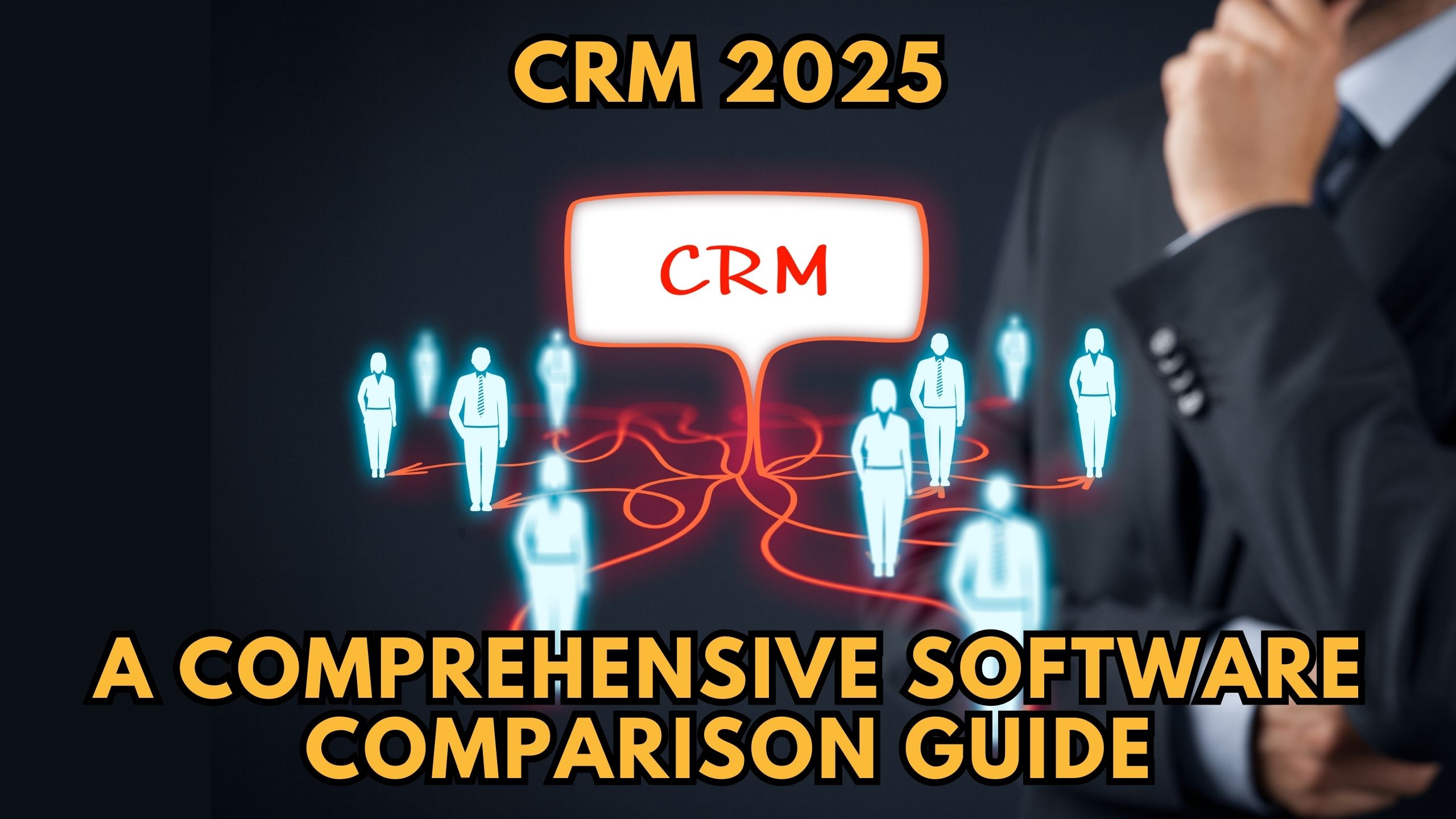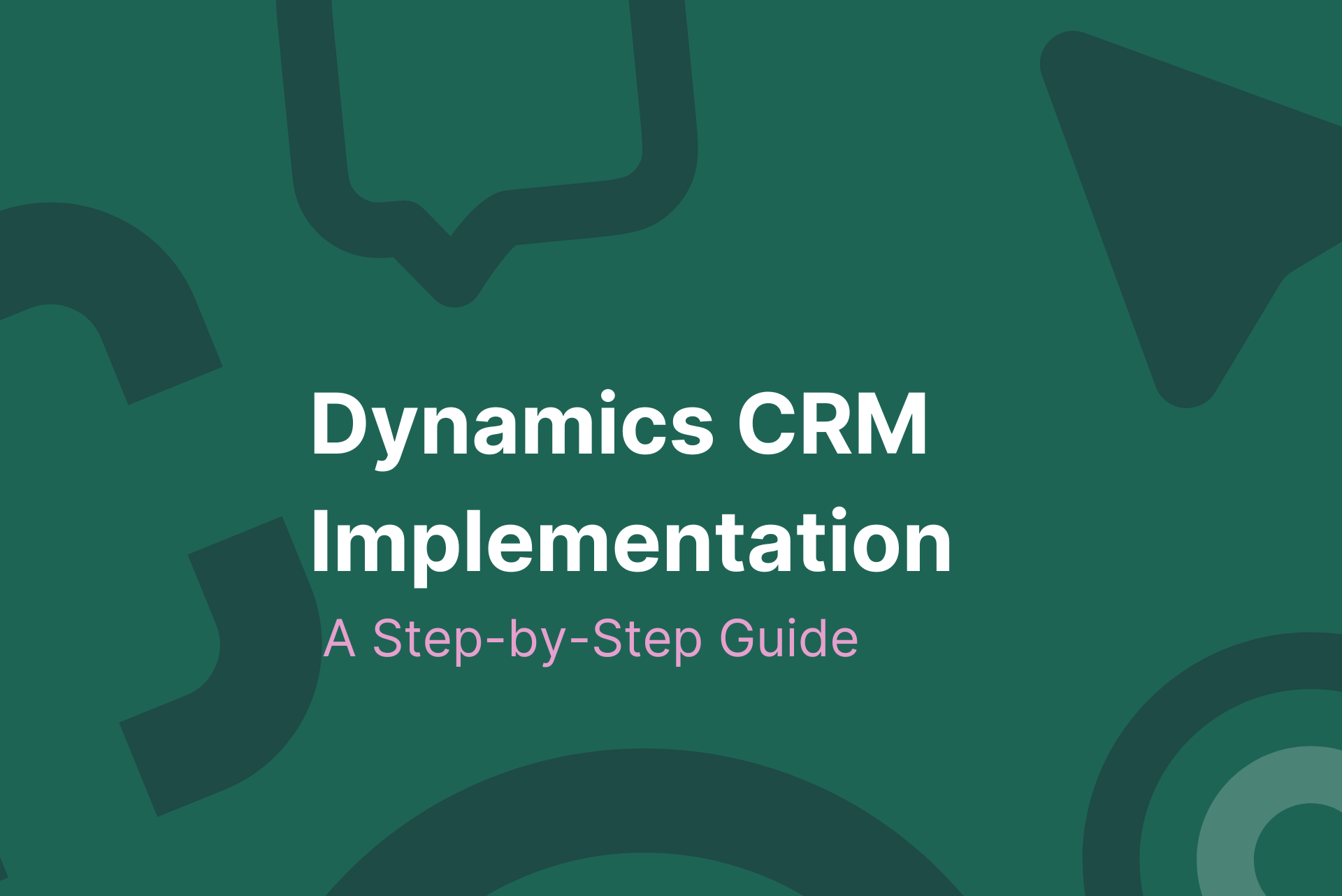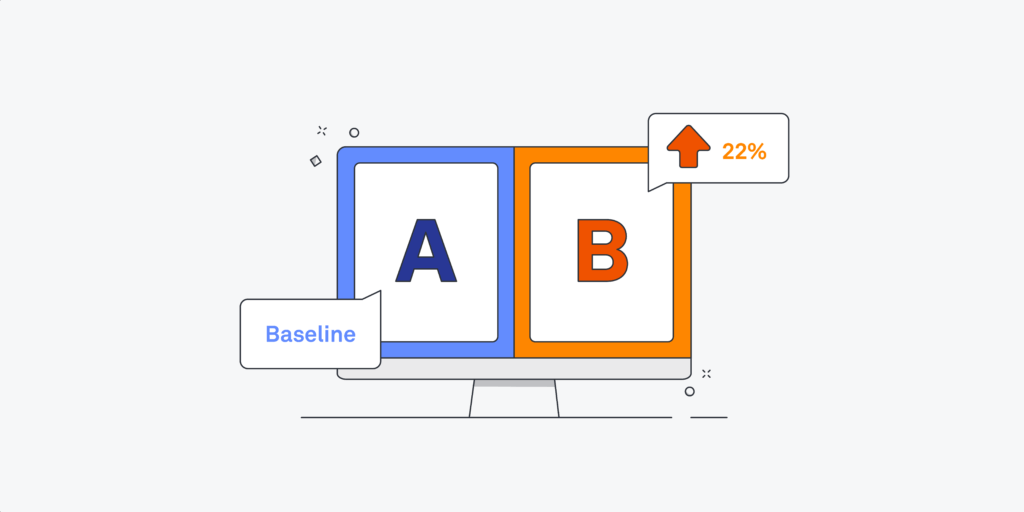
Unlocking CRM Marketing Potential: A/B Testing Your Way to Exponential Growth
In the ever-evolving landscape of digital marketing, staying ahead of the curve is not just an advantage, it’s a necessity. Customer Relationship Management (CRM) marketing has become a cornerstone of successful businesses, enabling personalized customer experiences and driving revenue growth. But simply implementing a CRM system isn’t enough. To truly harness its power, you need to constantly refine your strategies, and that’s where A/B testing comes into play. This comprehensive guide delves into the dynamic world of CRM marketing A/B testing, providing you with the knowledge and tools to optimize your campaigns, boost engagement, and achieve remarkable results.
What is CRM Marketing?
Before we dive into A/B testing, let’s establish a solid understanding of CRM marketing. At its core, CRM marketing is a strategic approach that centers around using a CRM system to manage and analyze customer interactions and data throughout the customer lifecycle. This allows businesses to:
- Personalize customer experiences: Tailor marketing messages, offers, and content to individual customer preferences and behaviors.
- Improve customer relationships: Foster stronger connections with customers through consistent, relevant communication.
- Increase customer lifetime value: Encourage repeat purchases and build brand loyalty.
- Enhance sales and marketing efficiency: Automate tasks, track performance, and optimize campaigns for maximum impact.
CRM marketing encompasses a wide range of activities, including email marketing, lead nurturing, customer segmentation, and sales automation. The ultimate goal is to create a seamless and personalized customer journey that drives conversions and fosters long-term customer loyalty.
The Power of A/B Testing in CRM Marketing
A/B testing, also known as split testing, is a methodology that involves comparing two versions of a marketing element (e.g., email subject lines, website landing pages, call-to-actions) to determine which one performs better. In the context of CRM marketing, A/B testing is an invaluable tool for:
- Optimizing email campaigns: Experiment with different subject lines, email content, and calls-to-action to improve open rates, click-through rates, and conversions.
- Refining landing pages: Test different headlines, layouts, and forms to increase lead generation and conversion rates.
- Personalizing customer journeys: Tailor content and offers based on customer behavior and preferences to maximize engagement.
- Improving customer segmentation: Identify the most effective ways to segment your audience and target them with relevant messaging.
- Maximizing ROI: Make data-driven decisions that lead to higher conversion rates, increased revenue, and improved customer satisfaction.
A/B testing is not just about making minor tweaks; it’s about systematically testing and refining your marketing efforts to achieve significant improvements in performance. It’s a continuous process of experimentation, analysis, and optimization.
Key Elements to A/B Test in CRM Marketing
The possibilities for A/B testing in CRM marketing are virtually endless. However, focusing on the key elements can yield the most significant results. Here are some areas where you should prioritize your testing efforts:
1. Email Marketing
Email marketing remains a cornerstone of CRM marketing. A/B testing your email campaigns can significantly impact your open rates, click-through rates, and conversions. Consider testing the following:
- Subject Lines: Experiment with different subject lines to see which ones grab your audience’s attention. Test different lengths, tones (e.g., urgent, friendly, intriguing), and personalization elements (e.g., using the recipient’s name).
- Email Content: Test different email layouts, content formats (e.g., text-based vs. image-heavy), and calls-to-action (CTAs). Experiment with different value propositions, benefits, and tone of voice.
- Call-to-Actions (CTAs): Test different button colors, button text, and button placement. Experiment with different action verbs (e.g., “Shop Now,” “Learn More,” “Get Started”).
- Send Times: Test different send times to determine when your audience is most likely to open and engage with your emails.
- Personalization: Test different levels of personalization, such as using the recipient’s name, location, or past purchase history.
2. Landing Pages
Landing pages are critical for converting leads into customers. A/B testing your landing pages can significantly impact your conversion rates. Consider testing the following:
- Headlines: Test different headlines to see which ones resonate most with your target audience. Experiment with different value propositions, benefits, and emotional appeals.
- Layout and Design: Test different layouts, designs, and color schemes to see which ones are most visually appealing and effective.
- Forms: Test different form lengths, form fields, and form layouts to optimize lead generation.
- Call-to-Actions (CTAs): Test different button colors, button text, and button placement. Experiment with different action verbs.
- Content: Test different content formats, such as video, images, and text. Experiment with different value propositions and benefits.
3. Customer Segmentation
Effective customer segmentation is crucial for delivering personalized marketing messages. A/B testing your segmentation strategies can help you identify the most effective ways to segment your audience. Consider testing the following:
- Segmentation Criteria: Test different segmentation criteria, such as demographics, psychographics, purchase history, and website behavior.
- Targeting: Test different targeting strategies based on your segmentation criteria.
- Messaging: Test different messaging tailored to each segment.
- Offers: Test different offers tailored to each segment.
4. Website and In-App Experiences
Beyond email and landing pages, you can A/B test elements on your website and within your app to optimize the customer experience and drive conversions. Consider testing:
- Website Navigation: Test different navigation menus and layouts to improve usability and guide users towards desired actions.
- Product Pages: Test different product descriptions, images, and videos to improve engagement and drive sales.
- Checkout Process: Test different checkout flows and form layouts to reduce cart abandonment and increase conversions.
- In-App Notifications: Test different notification messages, timing, and frequency to improve user engagement.
Setting Up Your CRM Marketing A/B Tests
Successfully implementing A/B testing in your CRM marketing strategy involves a structured approach. Here’s a step-by-step guide:
1. Define Your Goals and Objectives
Before you start testing, clearly define your goals and objectives. What do you want to achieve with your A/B tests? Are you trying to increase open rates, click-through rates, conversions, or customer lifetime value? Having clear goals will help you choose the right metrics to measure and analyze your results.
2. Identify Your Target Audience
Who are you trying to reach with your A/B tests? Understanding your target audience is crucial for creating relevant and effective tests. Consider your audience’s demographics, psychographics, and behavior. This will help you tailor your tests to their specific needs and preferences.
3. Choose Your Testing Elements
Based on your goals and objectives, select the elements you want to test. Start with the elements that you believe will have the biggest impact on your results. Prioritize testing elements that are easy to implement and measure.
4. Create Your Variations
Create two or more variations of the element you are testing. Make sure each variation is different enough to have a measurable impact. Keep the changes focused on a single element to isolate the effect of each variation.
5. Set Up Your Test
Use a dedicated A/B testing tool or your CRM system’s built-in testing features to set up your test. Define your testing parameters, such as the sample size, duration, and allocation of traffic to each variation. Make sure your test is properly configured to collect accurate data.
6. Run Your Test
Let your test run for a sufficient amount of time to collect enough data for statistically significant results. The duration of your test will depend on your traffic volume and the expected impact of your variations. Monitor your test regularly to ensure it’s running smoothly.
7. Analyze Your Results
Once your test is complete, analyze the results to determine which variation performed best. Use statistical analysis to determine if the differences between the variations are statistically significant. Don’t rely on gut feelings; let the data guide your decisions.
8. Implement Your Findings
Based on your test results, implement the winning variation. Apply the learnings from your test to optimize your other marketing efforts. Continuously test and refine your strategies to achieve ongoing improvements.
Tools for CRM Marketing A/B Testing
Several tools can help you conduct A/B tests within your CRM marketing efforts. These tools offer features that simplify the testing process, from creating variations to analyzing results. Here are some popular options:
- CRM Systems with Built-in A/B Testing: Many CRM platforms, like HubSpot, Salesforce, and Marketo, offer built-in A/B testing capabilities for email campaigns and landing pages. This simplifies the process and allows you to seamlessly integrate testing into your existing workflows.
- Dedicated A/B Testing Platforms: Specialized A/B testing platforms, such as Optimizely, VWO (Visual Website Optimizer), and Google Optimize, provide more advanced features and capabilities. These platforms offer greater flexibility and control over your testing efforts, allowing you to test a wider range of elements and analyze more complex data.
- Email Marketing Platforms with A/B Testing: Email marketing platforms like Mailchimp, Constant Contact, and Sendinblue, usually have A/B testing functionality for email campaigns. These are often easier to use, especially if your primary focus is email optimization.
The best tool for you will depend on your specific needs and budget. Consider factors such as the features offered, ease of use, and integration capabilities when choosing your tool.
Best Practices for CRM Marketing A/B Testing
To maximize the effectiveness of your A/B testing efforts, follow these best practices:
- Focus on one element at a time: Test one element at a time to isolate the impact of each variation. This will make it easier to understand which changes are driving the best results.
- Test with a large enough sample size: Ensure your tests run long enough to collect a statistically significant sample size. This will give you confidence in your results.
- Segment your audience: Segment your audience to personalize your tests and ensure relevance.
- Use a clear hypothesis: Before running a test, develop a clear hypothesis about what you expect to happen. This will help you focus your testing efforts and interpret your results more effectively.
- Analyze your results carefully: Don’t just look at the overall results; delve deeper into the data to understand why one variation performed better than another.
- Continuously test and refine: A/B testing is an ongoing process. Continuously test and refine your strategies to achieve ongoing improvements.
- Document your tests: Keep detailed records of all your A/B tests, including your goals, hypotheses, variations, results, and conclusions. This will help you track your progress and learn from your experiences.
- Prioritize based on impact: Focus on testing elements that are likely to have the biggest impact on your goals. Prioritize tests that can generate the most significant improvements in conversion rates, revenue, or customer satisfaction.
- Don’t be afraid to fail: Not all A/B tests will be successful. Embrace failure as a learning opportunity and use it to refine your future tests.
Measuring Success: Key Metrics to Track
To accurately assess the effectiveness of your A/B testing efforts, it’s crucial to track the right metrics. The specific metrics you track will depend on your goals and objectives, but here are some key metrics to consider:
- Open Rate: The percentage of emails that are opened by recipients. This metric is especially relevant when testing subject lines.
- Click-Through Rate (CTR): The percentage of recipients who click on a link within your email or landing page.
- Conversion Rate: The percentage of visitors who complete a desired action, such as making a purchase, filling out a form, or signing up for a trial.
- Bounce Rate: The percentage of emails that are not delivered to the recipient’s inbox. A high bounce rate can indicate problems with your email list or email content.
- Unsubscribe Rate: The percentage of recipients who unsubscribe from your email list.
- Lead Generation Rate: The percentage of visitors who become leads by filling out a form or taking another desired action on a landing page.
- Customer Acquisition Cost (CAC): The cost of acquiring a new customer.
- Customer Lifetime Value (CLTV): The predicted revenue a customer will generate throughout their relationship with your business.
- Revenue per Email Sent: This metric can help you assess the revenue generated by each email campaign.
- Time on Page: The amount of time visitors spend on a landing page.
- Number of Forms Completed: Measures the effectiveness of form design and placement.
By tracking these metrics, you can gain valuable insights into the performance of your A/B tests and make data-driven decisions to improve your CRM marketing efforts.
Common Pitfalls to Avoid in A/B Testing
While A/B testing can be incredibly powerful, it’s essential to be aware of common pitfalls that can undermine your efforts. Avoiding these mistakes will help you achieve more accurate results and maximize the impact of your tests:
- Testing Too Many Elements at Once: Testing multiple elements simultaneously can make it difficult to isolate the impact of each variation. Focus on testing one element at a time to ensure clarity.
- Not Running Tests Long Enough: Failing to run your tests long enough can lead to inaccurate results. Ensure you collect a statistically significant sample size to draw reliable conclusions.
- Not Segmenting Your Audience: Testing on a broad audience without segmentation can mask important insights. Segment your audience to personalize your tests and gain deeper insights.
- Ignoring Statistical Significance: Don’t make decisions based on gut feelings. Use statistical analysis to determine if the differences between your variations are statistically significant.
- Not Having a Clear Hypothesis: Without a clear hypothesis, you may struggle to interpret your results and draw meaningful conclusions. Always start with a well-defined hypothesis.
- Not Documenting Your Tests: Failing to document your tests can lead to wasted time and effort. Keep detailed records of your tests, including your goals, hypotheses, variations, results, and conclusions.
- Not Following Best Practices: Ignoring best practices, such as testing with a large enough sample size or focusing on a single element at a time, can compromise the validity of your results.
- Relying on Short-Term Data: Avoid making decisions based solely on short-term data. Give your tests enough time to run and collect enough data to account for fluctuations.
- Not Iterating: A/B testing is not a one-time activity. It’s a continuous process of experimentation, analysis, and optimization. Keep iterating and refining your strategies to achieve ongoing improvements.
Examples of Successful CRM Marketing A/B Tests
To illustrate the power of A/B testing, let’s look at some real-world examples of successful CRM marketing A/B tests:
- Email Subject Line Test: A company tested two email subject lines: “Limited-Time Offer Inside!” vs. “[Name], Exclusive Deal for You.” The personalized subject line with the recipient’s name saw a 25% increase in open rates.
- Landing Page Headline Test: An e-commerce store tested two landing page headlines: “Shop Our New Collection” vs. “Discover Your Perfect Style.” The headline that focused on the customer’s needs saw a 15% increase in conversion rates.
- Call-to-Action Button Test: A software company tested two call-to-action buttons on a landing page: “Get a Free Trial” vs. “Start Your Free Trial Now.” The button with the more action-oriented text saw a 20% increase in click-through rates.
- Email Content Test: An online retailer tested two email content variations: One with a focus on product features, and the other highlighting customer benefits. The email that emphasized benefits saw a 10% increase in sales.
- Lead Nurturing Email Test: A B2B company tested two lead nurturing email sequences: One was purely informational, and the other included a special offer. The sequence with the offer generated 18% more qualified leads.
These examples demonstrate the tangible benefits of A/B testing in CRM marketing. By systematically testing and refining their marketing efforts, these companies were able to achieve significant improvements in key performance indicators, ultimately driving revenue growth and customer satisfaction.
The Future of CRM Marketing A/B Testing
As technology continues to evolve, the future of CRM marketing A/B testing is bright. Here are some trends to watch:
- Artificial Intelligence (AI) and Machine Learning (ML): AI and ML are already being used to automate A/B testing, identify patterns, and predict which variations will perform best. Expect to see more sophisticated AI-powered testing tools in the future.
- Personalization at Scale: As CRM systems become more sophisticated, marketers will be able to personalize their marketing efforts to an even greater degree. A/B testing will be crucial for optimizing personalized experiences and ensuring relevance.
- Cross-Channel Testing: Marketers will increasingly test across multiple channels, such as email, SMS, social media, and in-app messaging. This will require a more holistic approach to A/B testing.
- Focus on Customer Experience: A/B testing will become increasingly focused on improving the overall customer experience. This will involve testing elements such as website usability, customer service interactions, and product recommendations.
- Integration with Data Analytics: A/B testing will be more tightly integrated with data analytics platforms, allowing marketers to gain deeper insights into customer behavior and optimize their campaigns more effectively.
By staying informed about these trends, you can prepare for the future of CRM marketing A/B testing and ensure that your campaigns remain optimized for maximum impact.
Conclusion
CRM marketing A/B testing is a powerful tool that can help you unlock the full potential of your CRM system and achieve exponential growth. By systematically testing and refining your marketing efforts, you can optimize your campaigns, boost engagement, and drive conversions. Remember to define your goals, identify your target audience, choose your testing elements, create your variations, set up your test, run your test, analyze your results, and implement your findings. Embrace best practices, avoid common pitfalls, and continuously test and refine your strategies. The future of CRM marketing A/B testing is bright, with AI, personalization, and cross-channel testing playing increasingly important roles. By embracing these trends, you can stay ahead of the curve and achieve remarkable results. Start testing today and watch your CRM marketing efforts transform into a well-oiled, high-performing machine.

